Homemade Ban Mian: A Comprehensive Guide to Crafting Authentic Chinese Hand-Pulled Noodles with Savory Minced Pork Broth*
Ban mian, a beloved Chinese noodle dish, embodies the essence of home-cooked comfort food. Originating from Southeast Asia, particularly in regions like Malaysia and Singapore, this dish combines hand-pulled noodles with a fragrant, savory broth and a medley of toppings. The term ban mian* translates to “flattened noodles,” referencing the traditional method of flattening dough by hand before cooking. Unlike machine-made noodles, the artisanal touch of hand-pulling gives ban mian its signature chewy texture and rustic appeal. This dish is both versatile and nourishing, adaptable to personal tastes and seasonal ingredients. Whether you’re a seasoned home cook or a novice in the kitchen, mastering the art of ban mian allows you to recreate a taste of Asian street food culture in your own home.
This article will guide you through the process of making ban mian from scratch, focusing on three core elements: the noodles, the broth, and the toppings. We’ll explore the science behind achieving perfectly chewy noodles, the secrets to a flavorful broth, and creative ways to customize your bowl. By the end, you’ll have a deep understanding of how to balance flavors, textures, and aromas to create a memorable meal.
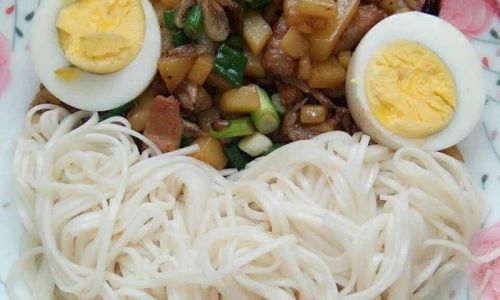
Ingredients: Building Blocks of Flavor
To embark on your ban mian journey, gather the following ingredients. For clarity, we’ve divided them into three categories: noodles, broth, and toppings.
Noodles
- All-purpose flour: 400g (3½ cups) – Provides structure and chewiness.
- Water: 200ml (¾ cup + 1 tbsp) – Adjust based on flour’s humidity.
- Salt: ½ tsp – Enhances dough elasticity.
- Optional: 1 tbsp vegetable oil – For a softer texture (less traditional but forgiving for beginners).
Broth
- Chicken or pork bones: 500g – For a rich, gelatinous base (substitute with vegetable stock for a vegetarian version).
- Minced pork: 200g – Adds umami and heartiness.
- Garlic: 4 cloves, minced – Aromatic foundation.
- Ginger: 1-inch piece, grated – Warmth and depth.
- Shaoxing wine: 2 tbsp – Deglazes the pot and adds complexity.
- Soy sauce: 3 tbsp – Saltiness and color.
- Dark soy sauce: 1 tbsp – For richness (optional).
- Sugar: 1 tsp – Balances saltiness.
- White pepper: ½ tsp – Subtle heat.
- Water or stock: 1.5 liters – To cover bones and simmer.
Toppings
- Bok choy or spinach: 2 cups, blanched – Fresh green element.
- Fried shallots: ¼ cup – Crispy texture and nutty aroma.
- Soft-boiled egg: 2 eggs – Luxurious richness (optional).
- Sesame oil: 1 tsp – Finishing touch for aroma.
- Fresh cilantro: ¼ cup, chopped – Brightness and color.
- Chili oil or sambal: To taste – For heat (adjust as preferred).
Equipment Checklist
- Large mixing bowl
- Rolling pin (or a sturdy bottle)
- Sharp knife or pizza cutter
- Heavy-bottomed pot for broth
- Slotted spoon
- Tongs
- Ladle
Step-by-Step Instructions
Crafting the Noodles: From Dough to Dinner Table
The foundation of exceptional ban mian lies in the noodles. Unlike Italian pasta, which prioritizes smoothness, ban mian noodles thrive on a slightly rough texture to cling to the broth.
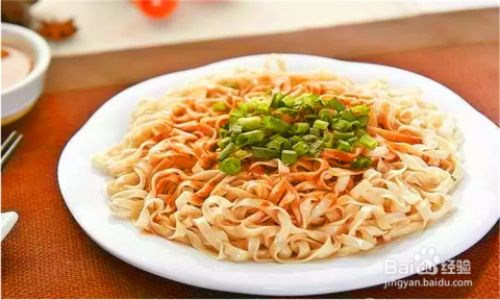
a. Making the Dough
- In a large bowl, whisk flour and salt. Create a well in the center.
- Gradually pour water into the well, stirring with chopsticks or a fork until a shaggy dough forms.
- Transfer to a clean surface and knead for 8–10 minutes. The dough should feel smooth, elastic, and slightly tacky. If it sticks to your hands, add flour 1 tbsp at a time; if it cracks, sprinkle water.
- Shape into a ball, coat lightly with oil (if using), and wrap in plastic. Let rest for 30–60 minutes. Resting allows gluten to relax, making rolling easier.
b. Rolling and Cutting the Noodles
- Divide the dough into 4–6 equal portions. Keep unused portions covered to prevent drying.
- Flatten one portion with your palm, then use a rolling pin to roll into a thin oval (≈2mm thick). Dust lightly with flour to prevent sticking.
- Traditionally, cooks fold the dough into an accordion and slice it into 1cm-wide strips. For a modern twist, use a pizza cutter for even width.
- Gently unfurl the noodles and dust with flour. Repeat with remaining dough.
Pro Tip: If hand-pulling intimidates you, skip the cutting! Instead, stretch the dough into thick strands by hand for a rustic, uneven texture.
Simmering the Soul: Building a Flavorful Broth
A stellar broth transforms simple noodles into a meal. While bone-based broths require patience, the depth of flavor is unparalleled.
a. Preparing the Broth Base
- Rinse bones under cold water to remove impurities.
- In a heavy pot, sear bones over medium-high heat until golden brown (5–7 minutes). This caramelization adds complexity.
- Add minced garlic and ginger, sautéing until fragrant (1–2 minutes).
- Deglaze with Shaoxing wine, scraping up browned bits.
- Pour in water/stock, bring to a boil, then reduce to a gentle simmer. Skim off foam periodically.
- Simmer uncovered for 1.5–2 hours. Longer simmering intensifies flavor.
b. Infusing Umami with Minced Pork
- In a separate pan, brown minced pork over high heat. Break it into small crumbles.
- Once cooked, add 1 tbsp soy sauce, ½ tsp sugar, and ¼ tsp white pepper. Stir to coat.
- Transfer pork (including juices) to the broth. Simmer for an additional 30 minutes.
c. Final Seasoning
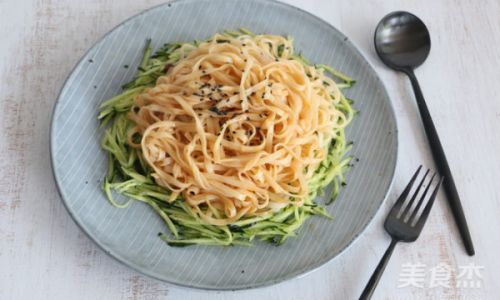
- Taste the broth and adjust seasoning: add remaining soy sauce, sugar, or white pepper.
- Strain the broth through a fine-mesh sieve to remove solids. Return to the pot and keep warm.
Assembling the Bowl: Balancing Texture and Flavor
The magic of ban mian lies in the harmony of components. Each element plays a role: noodles provide substance, broth delivers warmth, and toppings add contrast.
a. Cooking the Noodles
- Bring a large pot of salted water to a rolling boil.
- Add noodles, stirring gently to prevent sticking. Cook for 2–3 minutes until al dente.
- Drain and rinse briefly under cold water to halt cooking. This step also removes excess starch.
b. Blanching Vegetables
- In the same pot, blanch bok choy for 1–2 minutes until vibrant green.
- Drain and set aside.
c. Soft-Boiled Eggs (Optional)
- Gently lower eggs into boiling water. Cook for 6–7 minutes for a runny yolk.
- Transfer to an ice bath, then peel and halve.
d. Serving
- Place a portion of noodles in a bowl.
- Ladle hot broth over the noodles.
- Arrange blanched vegetables, minced pork, and a soft-boiled egg (if using) on top.
- Garnish with fried shallots, cilantro, and a drizzle of sesame oil.
- Serve immediately with chili oil on the side.
Mastering Variations: Customizing Your Ban Mian
One of ban mian’s charms is its adaptability. Experiment with these ideas to suit your palate:
a. Protein Swaps
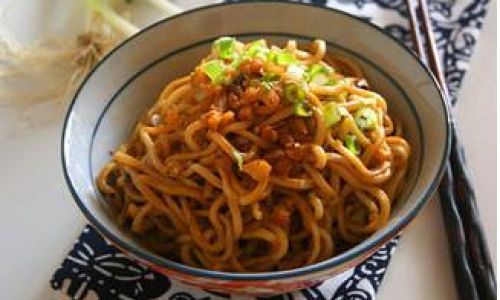
- Replace minced pork with diced chicken, shrimp, or tofu.
- For a seafood twist, add clams or mussels to the broth during the last 5 minutes of simmering.
b. Vegetarian Broth
- Use dried shiitake mushrooms and kombu (kelp) for depth.
- Enhance with miso paste or nutritional yeast for umami.
c. Spicy Kick
- Stir-fry 1 tbsp chili paste with garlic and ginger before adding to the broth.
- Top with fresh bird’s-eye chilies for extra heat.
d. Noodle Alternatives
- Use store-bought udon noodles for a quicker meal.
- For gluten-free options, substitute rice flour noodles (adjust cooking time accordingly).
Troubleshooting Common Issues
My Dough Is Too Sticky/Dry
- Sticky dough: Knead in 1 tbsp flour at a time until smooth.
- Dry dough: Sprinkle 1 tsp water and knead until pliable.
Broth Lacks Depth
- Roast bones longer next time for deeper caramelization.
- Add a splash of fish sauce or dried anchovies during simmering.
Noodles Are Gummy
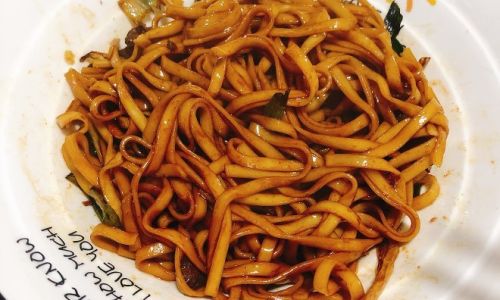
- Overcooking causes gumminess. Test noodles 1 minute before the recommended time.
- Rinsing noodles after cooking removes excess starch.
Toppings Feel Sparse
- Double the toppings or add pickled vegetables (e.g., daikon) for crunch.
The Cultural Tapestry of Ban Mian
Ban mian is more than a meal—it’s a cultural artifact. In Singapore and Malaysia, hawker centers buzz with stalls serving steaming bowls of ban mian alongside satay and roti prata. Each vendor adds a personal touch: some use anchovies for brininess, others emphasize ginger for warmth. The dish’s simplicity allows it to transcend social boundaries, equally at home in a family kitchen or a bustling night market.
For overseas communities, ban mian evokes nostalgia—a taste of home in a foreign land. Modern adaptations, like vegan versions or fusion bowls with kimchi, reflect the dish’s enduring adaptability.
Conclusion: The Joy of Homemade Ban Mian
Crafting ban mian from scratch is a labor of love, but the rewards are profound. Each slurp of noodles, each sip of broth, and each crunch of fried shallot tells a story—of tradition, patience, and the joy of sharing food with loved ones. Whether you’re perfecting your dough-making technique or experimenting with spicy toppings, ban mian invites creativity while honoring time-honored methods.
So, roll up your sleeves, dust your workspace with flour, and embark on this culinary adventure. Your bowl of ban mian awaits—a testament to the idea that the simplest ingredients, treated with care, can become extraordinary.
Final Tip: Leftovers? Store noodles and broth separately to prevent sogginess. Reheat the broth, cook noodles à la minute, and assemble fresh bowls. Ban mian’s magic endures, even on the second day.


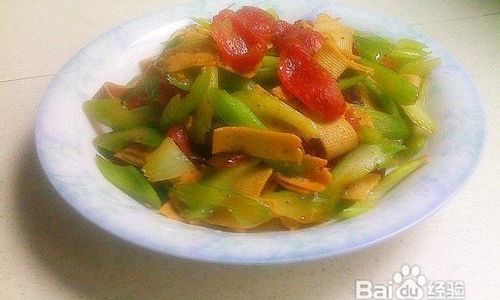
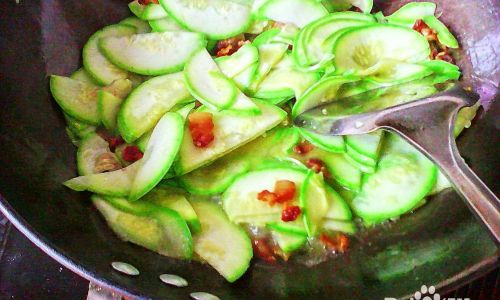
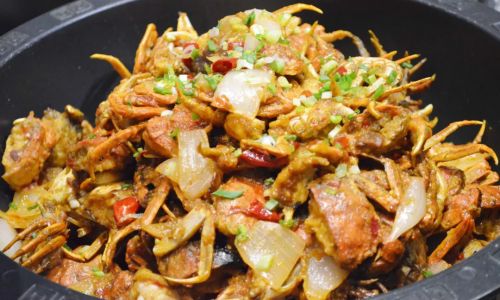
0 comments